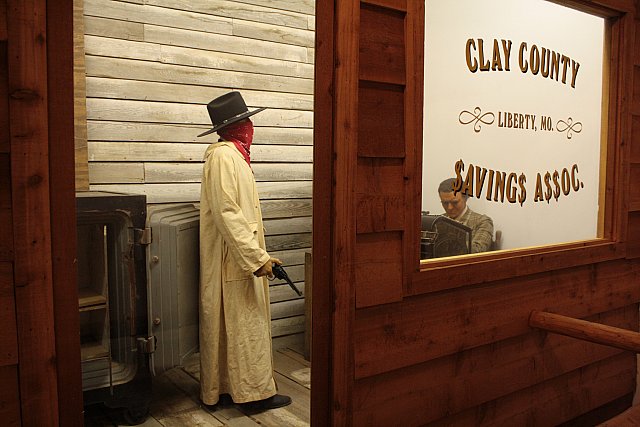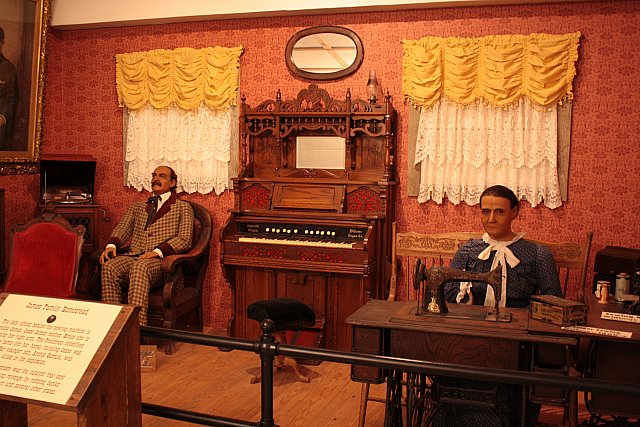
The story of Jesse James, which I knew little of before this trip through Missouri, just keeps getting weirder and weirder.
Today I visited the Jesse James Wax Museum in Stanton, a small Missouri town not far from St. Louis. Official history indicates that Jesse James was killed in 1882 in a rented house in St. Joseph, Missouri (the home is now a St. Joseph museum). But the owners of Jesse James Wax Museum hold that James faked his own death and left Missouri, and resurfaced in 1948 as a 100-year-old man under the name J. Frank Dalton. According to this version of the story, the real James returned to Missouri and lived for three years before dying in 1951.
The wax museum is dedicated to making the case that J. Frank Dalton was Jesse James. Displays use grainy black-and-white photos of the two men, along with the testimonies of several of James’ contemporaries, to try to convince visitors of this alternate version of history. During a tour of the museum, guests see a number of wax figures depicting scenes from James’ life, as well as a figure of the elderly Dalton after making his debut in public. Also on display are a number of antique firearms, as well as a computer-generated aging photos used to demonstrate how Jesse James would have aged into a old man resembling Dalton.
‘The evidence they found was amazing,’ said Tammy Franklin, my guide to the museum who was a true believer in the story. ‘It really does make sense.’
The story is certainly compelling — if Jesse James succeeded in faking his own death in 1882 to ultimately escape pursuit, it would be the greatest criminal exploit in American history. I’ve been so taken in by the tale that I’ve spent much of tonight reading historical accounts online, looking at the evidence presented by both sides. Most academics and scientists who comment on the issue point to a 1996 DNA test that confirms that the man buried on the farm in Kearney shares DNA with James’ sister. But to the true believers, the DNA test had several underlying innacuracies and, thus, proves nothing.
For me, the deciding factor is this: J. Frank Dalton was introduced to the public by Rudy Tirelli, one of the proprietors of Meramec Caverns in Stanton. The owners have long marketed the caverns as a hideout of the James gang in the 1800s, and drew no small ammount of media attention with their claims to have found the real, un-dead outlaw.
Sounds to me like Tirelli and company had a financial motivation to promote the tale of J. Frank Dalton. And if you make a trip to the Jesse James Wax Museum, they’ll make few bucks off of you, too. But for those who are fascinated with the legend and lore of Jesse James, or who can’t pass up a good conspiracy theory, this museum makes an interesting half-hour visit.













